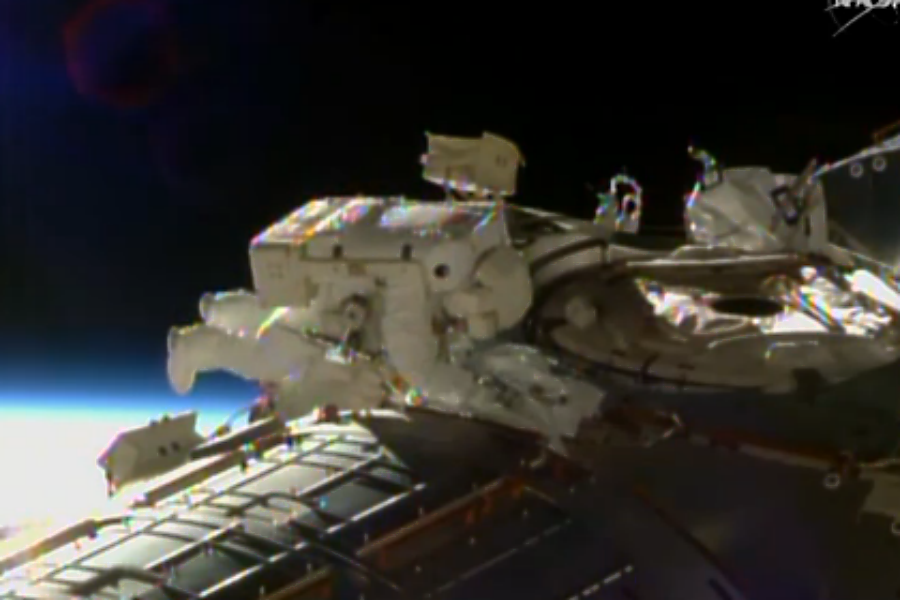Astronauts as cable guys: Biggest wiring job in space station history
| Cape Canaveral, Fla.
Astronauts stepped out on a spacewalk Saturday to perform some tricky cable work needed before new American-made crew capsules can dock at the International Space Station.
It was the first of three spacewalks planned for NASA astronauts Butch Wilmore and Terry Virts over the coming week.
Altogether, Wilmore and Virts have 764 feet of cable to run outside the space station. The longest single stretch, for installation Saturday, is 43 feet.
NASA considers this the most complicated cable-routing job in the 16-year history of the space station. Equally difficult will be running cable on the inside of the complex.
The extensive rewiring is needed to prepare for NASA's next phase 260 miles up: the 2017 arrival of the first commercial spacecraft capable of transporting astronauts to the orbiting lab. NASA is paying Boeing and SpaceX to build the capsules and fly them from Cape Canaveral, which hasn't seen a manned launch since the shuttles retired in 2011. Instead, Russia is doing all the taxi work — for a steep price.
The first of two docking ports for the Boeing and SpaceX vessels — still under development — is due to arrive in June. Even more spacewalks will be needed to rig everything up.
Virts, who arrived at the space station in December, savored the moment as he floated out on his first spacewalk high above the South Pacific. "Pretty cool," Virts said. The men hauled out with them a big white bundle containing cables. Saturday's space walk began at 7:45 a.m. EST and was expected to last 6.5 hours. NASA is broadcasting the spacewalk live online.
The second spacewalk will be Wednesday and the third on March 1.
Spacesuit concerns stalled the work by a day.
NASA wanted to make certain that the suits worn by Wilmore and Virts had reliable fan and pump assemblies. Two other fan-pump units failed aboard the space station in recent months and were returned to Earth earlier this month for analysis. Corrosion was discovered, the result of water intrusion from testing.
___
Online:
NASA:





